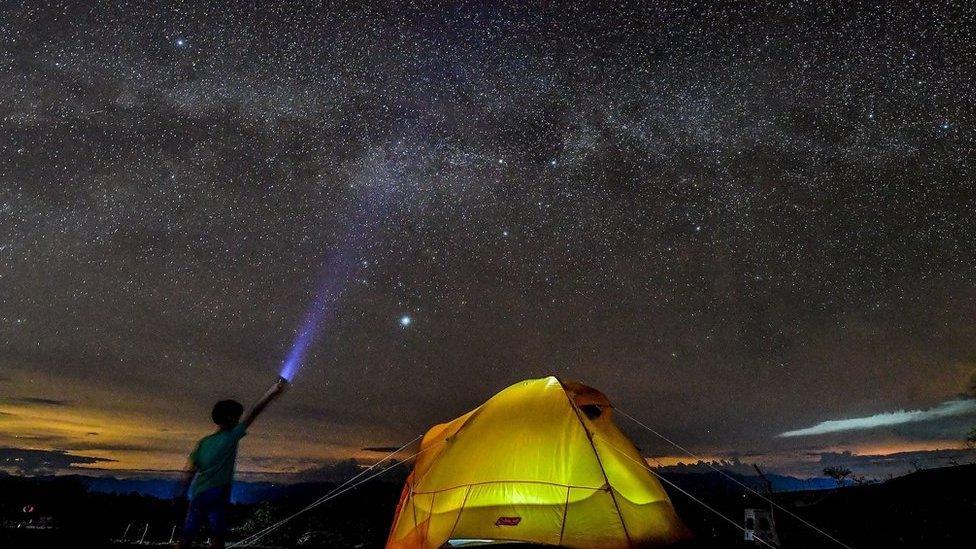November stargazing: From meteor showers to moons
- Published
- comments

From meteor showers to a full moon, there's lots of exciting things to look forward to this month in the night sky!
Stargazers will be in for a treat in November, with the return of the constellation Orion - and not one, but TWO meteor showers, as well as a spectacular full moon.
So wrap up warm and grab your binoculars because here's what's coming up!
A Beaver Blood Moon
A full November Beaver Moon rising above the top of Glastonbury Tor
On 19 November, stargazers will be treated to a full moon known as the Beaver Moon or Frost Moon.
As well as this, the Moon will also be a partial Blood Moon, which may make the Moon look red in colour.
A Blood Moon is another name given to a total lunar eclipse, which happens when the Earth moves in between the Sun and the Moon, casting a shadow on the Moon, and blocking out the Sun's light.
It won't be a full Blood Moon this month - a 97% lunar eclipse - but it does mean the Moon may appear less bright for some time.
The Taurid Meteor Shower
The first of the two meteor showers to shoot through our night sky is the Taurid meteor shower.
Although it will be visible throughout the whole of November, there will be two peak times to best enjoy this shower, so don't worry if you miss it the first time around.
The first will be between 4-5 November, and will take place at the same time as a New Moon, which means the night sky will be nice and dark with a better chance to view the speedy meteors.
The second peak will be between 11-12 November.
During these peak times stargazers will get the chance to see around five - 10 meteors every hour.
Leonid meteor shower
This time exposure photograph shows a series of polar stars during a meteor shower
The second meteor shower you can watch this month is the Leonid Meteor Shower.
The best time to watch this spectacular space firework show is between 16-18 November.
During the peak, stargazers can expect to see around 15-20 meteors streaking through the night sky each hour.
However, experts have said that this year might not be the best, as the peak is happening at the same time as the full moon, which means that the extra light will make it harder to see them.
The return of Orion
Finally, space fans will be able to see the famous starry constellation Orion back in the night sky again this month.
A constellation is a group of stars that forms an imaginary outline of something.
Named after the famous hunter Orion from ancient Greek mythology, this constellation can be seen from around 10pm.
One of the most recognisable parts of the constellation is the bright three-star belt in the middle, but it also features two of the brightest stars in the night sky, Bellatrix and Betelgeuse, which form Orion's shoulders.
WATCH: Top tips for stargazing from your garden
Will you be keeping an eye out for some of these astronomical wonders this month? Let us know below!
- Published13 February 2023
- Published8 February 2021
- Published23 October 2018
